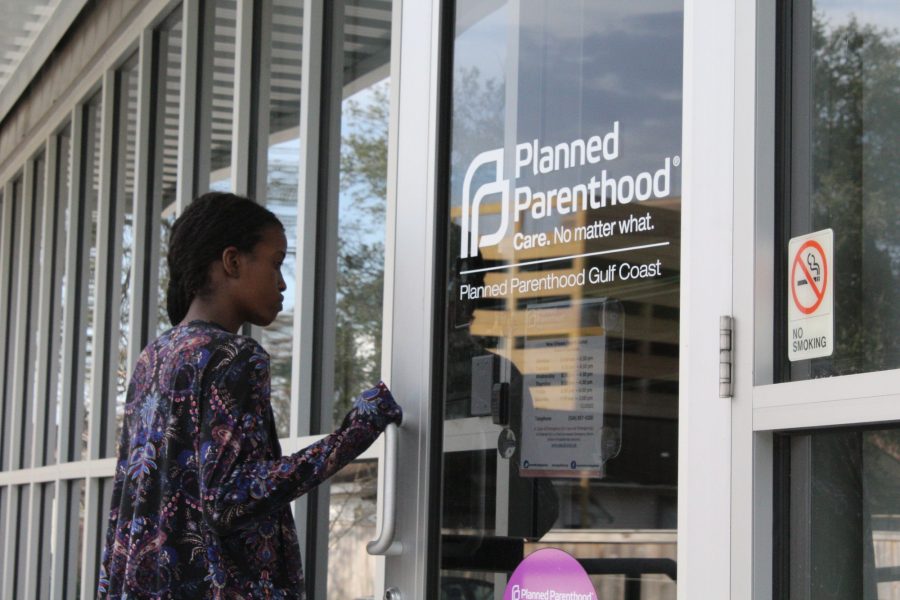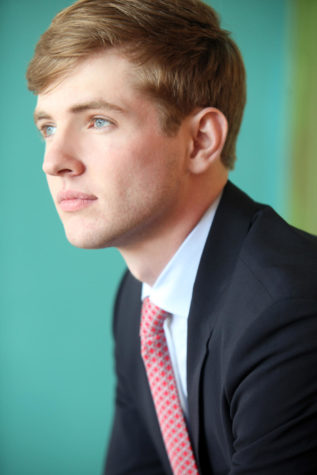Congress seeks to defund Planned Parenthood
Kyra Woods, physics junior, walks into the the new Planned Parenthood location built in 2016 on 4636 South Claiborne Avenue. Woods said she appreciated the larger space of the site and was glad the organization received a renovation from their previous location in a shotgun double on 4018 Magazine Street. Photo credit: Jamal Melancon
February 9, 2017
Over the next few months, the United States Congress aims to eliminate Planned Parenthood federal funding, causing the current form of the organization to lose 40 percent of its budget.
U.S. Sen. Joni Ernst introduced a bill on Jan. 31 that called for eliminating federal funding for Planned Parenthood and also removing an Obama administration rule that did not allow states to defund Planned Parenthood. The government funding from Planned Parenthood could be rerouted to approved health centers that do not perform abortions.
Planned Parenthood started receiving federal funding in 1970 and has been barred from using public money for abortions since 1976. According to the Guttmacher Institute, a research group focused on reproductive health; the United States appropriates $610 million each year aimed at providing family services across the globe.
Kyra Woods, physics junior, ponders the future condition of Planned Parenthood services.
“To strip even more funding for Planned Parenthood, not only will it hit contraceptives and birth control, it’s also going to affect cancer screenings and treatments that Planned Parenthood provides as well,” Woods said. “It’s specifically cutting healthcare for women.”
Anti-abortion advocates in the senate and house have been aiming for the strip of funds for several years but were blocked by a liberal majority since 2008. Now with Republicans at the helm of the executive and legislative branches, House Speaker Paul Ryan says Congress will pull all federal funding for Planned Parenthood in a bill that will also repeal the Affordable Care Act.
As politicians clammer over the issue, new statistics regarding abortion have emerged. The Guttmacher Institute released an in-depth study from 2014 regarding “Abortion Incidence and Service Availability in the United States.”
According to the research study from the Guttmacher Institute, from 1990 until 2008 the abortion rate was steadily declining about two percent each year. Over the next three years until 2011, the rate drastically dropped 13 percent.
From 2008 until 2011, the same period in which abortions drastically declined, so did the number of unintended pregnancies. The rate of unintended pregnancies dropped from 54 to 45 per 1000 women.
By 2014, the abortion rate was sitting at 14.6 abortions per 1000 women, the lowest rate since the landmark Roe v. Wade Supreme Court case of 1973, which established a fundamental right for women to an abortion.
Caroline Pratt, psychology sophomore, said she did not know about the national decline in abortion, but she did know about the constantly decreasing number of clinics around the country.
Access to clinics that provide reproductive healthcare has decreased significantly over the past several years as well. From 2011 to 2014, the number of clinics offering abortions has decreased by 6 percent. The bulk of the decline occurred in the Midwest (22 percent) and the South (13 percent).
“I would assume that the creation of these new contraceptive technologies like IUDs have a lot to do with it,” Pratt said.
An intrauterine device, commonly known as an IUD, is one of many new forms of long-acting reversible contraceptives which have become available over the past decade. The bulk of LARCs are provided by clinics such as Planned Parenthood. Roughly 2.5 million men and women visit Planned Parenthood clinics each year.
The Guttmacher Institute points to a rise in contraceptive use as a primary reason for the decline. According to the data, the use of long-acting reversible contraceptives (LARCs) increased 130 percent from 2007 until 2009, and continued at a slightly slower rate through 2012.
Woods said she assumed the record low abortion rate came from both better access to forms of birth control and more sex education at school.
Students at Loyola University performing the play “The Vagina Monologues” elected to donate proceeds from the play to Planned Parenthood, in the wake of talks to defund the organization. Members of the Students for Life club, however, didn’t approve, and their co-president wrote a letter to the Rev. Kevin Wildes, S.J., university president, asking that the proceeds go somewhere else.
Patricia Boyett, director of the Women’s Resource Center, explained that after the cast selected Planned Parenthood for the proceeds, John Sebastian, vice president for mission and ministry, and Kurt Bindewald, director of university ministry, reached to her to discuss their concerns with Loyola, as a Catholic university directly fundraising for Planned Parenthood.
“Then I met with the director of ‘Vagina Monologues,’ Ciara Rizzo, to share their concerns, Boyett said.” “Ms. Rizzo was extremely gracious and agreed to donate the proceeds to STAR (Sexual Trauma Awareness Response).”
Boyett says the students frequently rehearsed in the WRC and are passionate about women’s rights.
“If reproductive rights are taken away from women, it’s just going to lead to more women hurting themselves or dying from performing their own abortions,” Woods said.
National protest rallies calling for the defunding of Planned Parenthood will be taking place at the site of each states’ clinic on Feb. 11. The protest at the Planned Parenthood clinic on 4636 South Claiborne Avenue will be held from 9:00 a.m. to 10:30 a.m.
A support rally for defending Planned Parenthood will be taking place beforehand on Feb. 10 at City Hall from 3 p.m. to 5 p.m.








Rae Ann DiMaggio • Feb 15, 2017 at 5:28 pm
Once again I am in shock that Loyola would defend Planned Parenthood. Their main point of business is abortions, which if you are Catholic you do not believe in. Perhaps that is the problem with Loyola. Planned Parenthood does not provide very much health care at all.
Coleen Enmon • Feb 13, 2017 at 10:08 am
Planned Parenthood has done a great job convincing the public that services would be cut if federal funding was eliminited. Planned Parenthood performs approx 350,000 abortions per year, as per there own statistics. Each abortion ranges from $400- $500 and according to Planned Parenthood, abortions only make up 3% of their budget.
The total income receive for abortions at Planned Parenthood is $140,000,000 and being 3% of their budget the total budgeted annual income would be, you do the math, but can you say many trillions of dollars? Over 4 trillion and you think they need government assistance? Lets feed the poor and help the homeless and if you think Planned Parenthood is a needy cause, then donate out of your pocket, not mine.